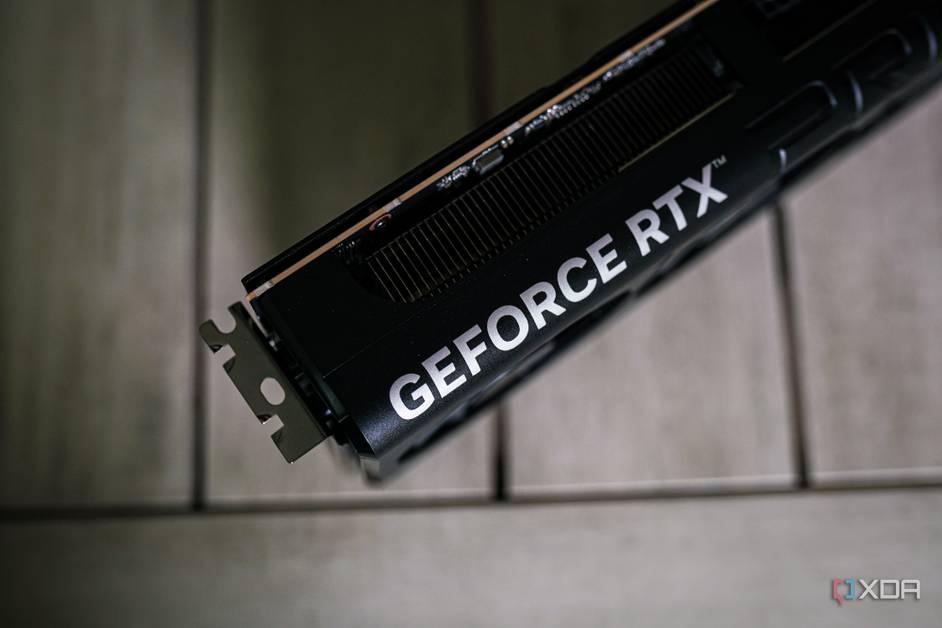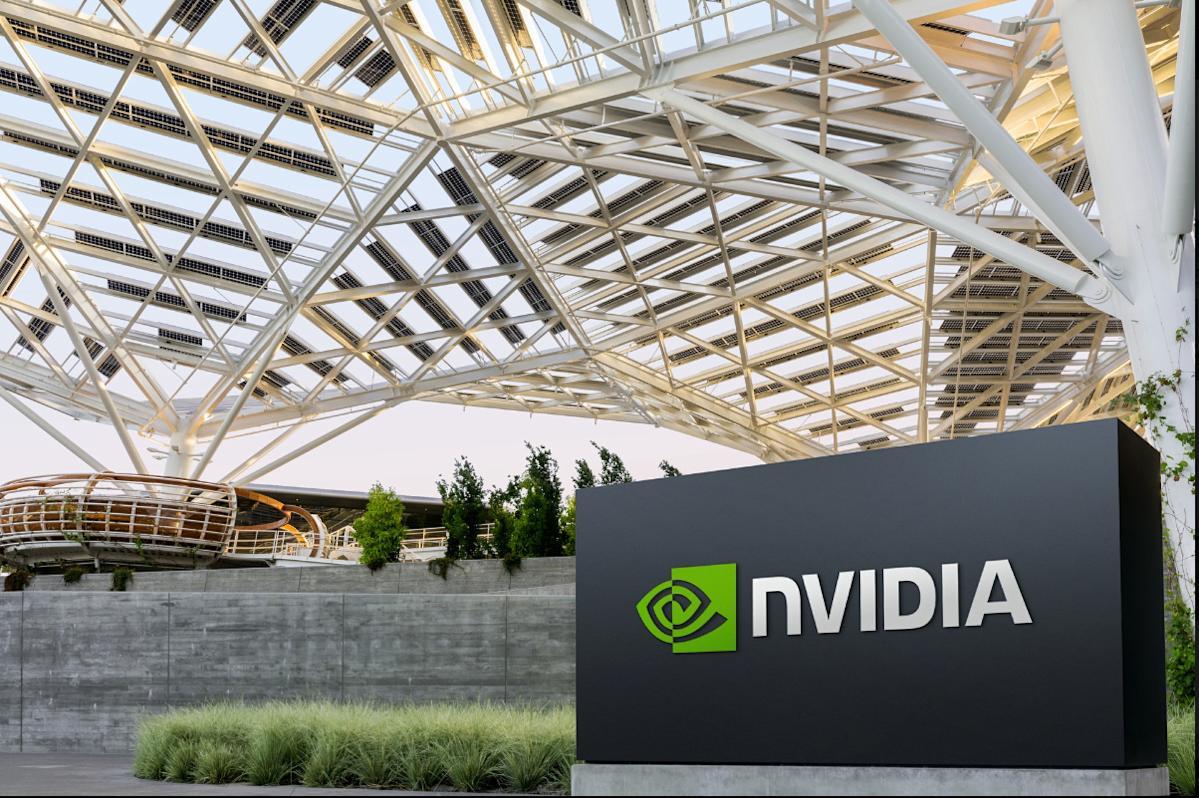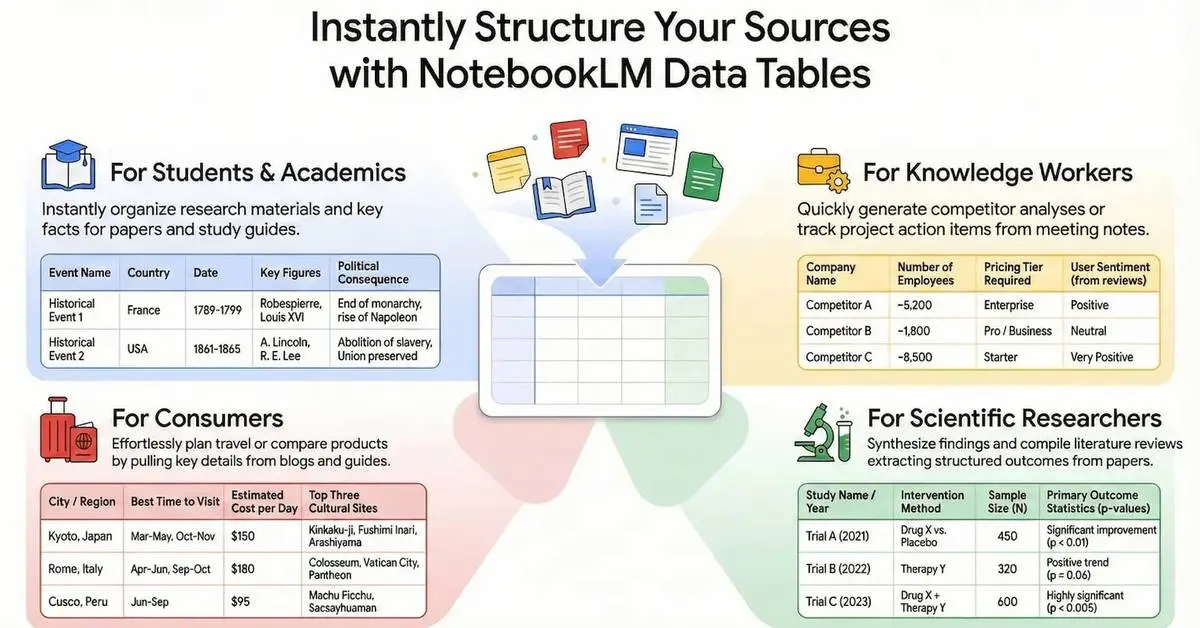Nvidia Dominates GPU Market with 92% Share, Leaving AMD and Intel Far Behind
4 Sources
4 Sources
[1]
This simple graph explains every decision Nvidia has made in the last few years
If you're active in the PC hardware space, you'd think that this year hasn't been kind to Nvidia. The launch of its RTX 50 series GPUs has been marred by driver issues, burning connectors, and poor stock. Pair that with questionable marketing statements like "4090 performance for $549", and you get to where we are now. But where are we exactly? We PC hardware enthusiasts might hold the opinion that while Nvidia is certainly still a giant in the consumer PC hardware space, it's had a rough year. The RTX 5060 launch certainly hasn't done them any favors. The reality is, Nvidia's priority no longer aligns with the consumer space; they have much bigger fish to fry, and their decisions in the last few years make a lot more sense when you look at their revenue data. Related Nvidia's new GPU is up to 14% faster than the RTX 5090 There's a new GPU champion in town. Posts 10 From humble beginnings to gaming giant Nvidia built up a ton of brand power with gamers Nvidia couldn't be further removed from its humble Denny's origin story. After its inception over crappy coffee in late 1992, Nvidia went on to take over the GPU industry, and they had their sights set on the gaming market from the beginning. While there were many companies trying to cash in on the need for graphics acceleration (most of them with more capital than Nvidia at the time), Nvidia was one of the only companies to enter the 2000s with a somewhat successful business. GeForce was born out of an emerging market for discrete graphics, and because of this, its brand has such staying power with gamers and hobbyists alike. Gaming was not just such a large part of why Nvidia became successful in the first place, but it was also what kept the ball rolling for them. ATI, later bought by AMD, just couldn't innovate and push performance to the same degree. Entering into the 2010s, GeForce cards were becoming the de facto choice for gamers and professionals. Related This 8-year-old GPU can still run modern games You can probably guess this masterpiece Posts 25 There was more money to be made Enterprise GPUs are more profitable Nvidia, like many companies in the semiconductor industry, makes significantly more money selling their enterprise equipment than they do selling consumer-grade silicon. That's why they've made a very concerted effort to buy up companies that specialize in the enterprise space, like Cumulus Technologies, Mellanox Technologies and many more. Expanding their scope was always something that was going to happen, but the AI-boom of the last few years took Nvidia to even greater heights. Suddenly, the silicon they were making had exponentially higher potential profit if it were to be made into an enterprise card versus a consumer one. If you thought an RTX 5090 was expensive, Nvidia's compute cards are in a league of their own. Cards such as the H100 can run well into the tens of thousands of dollars. Blackwell's B100 is similar, but companies aren't usually buying single GPUs -- they're buying complete systems that can be worth millions of dollars on their own. Related 5 things I wish I knew before buying a used GPU It's not as risky as it was once made out to be, but buying used GPUs still has its pitfalls. Posts 3 Looking at the data It all starts to make sense When you begin to even brush the surface of Nvidia's revenue data, their strange treatment of the gaming and hobbyist market becomes a lot more understandable. Looking at the breakdown done in App Economy Insights' "How They Make Money" newsletter, we can see that around the tail end of the RTX 30 series launches, Nvidia was still making a very significant chunk of revenue from the gaming sector. The launch of the RTX 40 Series and the eventual Super models coincides with the AI boom of late 2022, when the demand for enterprise compute GPUs had just begun to skyrocket. Their revenue from gaming GPUs was no longer growing, and their revenue from the data center sector doubled from Q1 2024 to Q2 2024, and continued to balloon from there. For gamers, hobbyists and even professionals, it's a pretty sobering graph to look at. Nvidia hasn't just outgrown the gaming sector, they've done so more than tenfold. It all starts to make a lot more sense as to why Nvidia has treated the GeForce brand the way they have. The revenue they made from the gaming sector in Q4 of 2024 doesn't even cover their operating costs. It's even less than the tax they had to pay. The complaints about pricing, stock, gaming performance, VRAM constraints -- all of them fall on deaf ears, drowned out by the sound of whining server fans and the low hum of commercial-grade air conditioning. The sweet sound of data center revenue. Despite what CEO Jensen Huang has said about Nvidia's commitment to gamers, their actions tell a slightly different story. But who can blame them? When your company suddenly becomes the powerhouse in a completely different industry that also happens to use the same, extremely valuable materials, you shift your focus onto that. Related Nvidia's treatment of the RTX 50 series shows the company doesn't care about gaming anymore No longer "the way it's meant to be played." Posts 30 What choice are gamers left with? AMD and Intel can step up big time Close This data affirms something big for the rest of the consumer GPU industry: there's going to be space to step up. GeForce has a ton of brand power, but that brand power is still probably worth less than Nvidia's current data center portfolio. Their recent actions suggest they still value the brand, but they might not be willing to compete on price with the smaller manufacturers. The goodwill they've built up with system integrators and consumers is powerful to say the least, so why not continue to ride it? Their recent treatment of the media during the launch of the RTX 5060 was labeled as ethically questionable by some, and the more negative press that comes out about the Green Team, the more market share that will be up for grabs in future GPU releases. AMD and Intel have a big opportunity to capture a chunk of the mid-range, which is already happening with the RX 9000 and Battlemage GPUs, respectively. The high-end has been abandoned by AMD because of an inability to compete with Nvidia's highest-end offerings, but there's only so many people that will be able to afford a $2000+ GPU. The future is uncertain, and the shake-up is just beginning. Related 3 reasons why my next GPU will be from AMD, not Nvidia or Intel I'm done overpaying for Nvidia GPUs Posts 26 Nvidia will be just fine, but the industry is changing rapidly Nvidia's primary source of revenue is no longer consumer GPUs, and as a result, their focus has shifted. Their QA mishaps, stock struggles, and dubious attitude towards media outlets during recent releases start to make a lot more sense. They aren't attempting to outright distance themselves from the gaming space, but they certainly see it through a much different lens. The door is ajar for AMD and Intel, but it's up to them to step through with both feet.
[2]
Nvidia reaches historic 92% GPU market share, leaves AMD and Intel far behind
The big picture: In our review of the 8GB variant of Nvidia's RTX 5060 Ti, we suggested that the GeForce 50 lineup might go down as the company's worst ever. Yet despite scarcity at more reasonable pricing, fierce competition from AMD, and plenty of criticism, Team Green's latest family of graphics cards has propelled it to unprecedented market dominance (even without taking AI into consideration). According to Jon Peddie Research, total sales of dedicated desktop graphics cards reached 9.2 million units in the first quarter of 2025 - an increase of more than 8% both year-over-year and quarter-over-quarter. Although both Nvidia and AMD launched new GPU lineups during this period, Nvidia benefited far more. Nvidia sold millions of RTX 50 series GPUs between January and March, while AMD's Radeon 9000 series shipped fewer than 750,000 units. Nvidia's market share surged to a historic 92%, squeezing AMD down to an all-time low of 8% and leaving nothing for Intel. Jon Peddie told Tom's Hardware that underproduction on AMD's side is the primary factor behind this dramatic gap. AMD reported "unprecedented" demand for the RX 9070 and 9070 XT in March, suggesting that it was caught off guard and is now racing to ramp up supply. The company also faces the added challenge of balancing its allocation of TSMC semiconductors between Radeon GPUs and Ryzen 9000 CPUs, which have also been in short supply following a strong market response. Interestingly, German GPU sales from last month - outside the scope of the Jon Peddie report - showed AMD ahead of Nvidia, hinting that upcoming financial briefs could reveal growing momentum for AMD's cards if production can catch up. Nvidia, meanwhile, expanded its already dominant market position despite releasing some of the least exciting graphics products in recent memory. In our reviews, we noted that the RTX 50 series GPUs deliver little performance uplift over the RTX 40 Super lineup. During recent coverage of Nvidia's quarterly financials, the company's gaming revenue (PC graphics cards) surged to a record $3.8 billion, up 42% year-over-year and 48% quarter-over-quarter. That's the fastest growth rate the gaming GPU segment has seen in years. However an "overlooked" factor behind gaming revenue growth may be the increasing diversion of high-end consumer GPUs into small-scale AI operations. As demand for AI compute spreads beyond large data centers to startups and independent developers, some gaming-class GPUs - especially higher-end RTX cards - are being repurposed for machine learning workloads. To AMD's credit, their latest Radeons finally caught up to Nvidia in ray tracing performance and upscaling image quality after trailing for several GPU generations. That triumph, alongside larger VRAM pools in some products, has allowed the $600+ Radeon 9070 XT to outpace its direct competitors and touch the $1,000 RTX 5080 in certain scenarios. Upcoming quarterly reports will shed more light on the battle between mainstream GPUs such as the RTX 5060, RX 9060, and possibly the Intel Arc B770. While AMD scrambles to increase production, Nvidia may scale back consumer GPU output to refocus on its true revenue driver: AI chips.
[3]
Nvidia extends desktop GPU market share beyond 90%
Jon Peddie Research says Nvidia has a 92 percent share of the graphics card market. AMD's share was almost cut in half and Intel sits at under 0.1 percent. When it comes to desktop graphics cards, Nvidia rules the roost even while gamers complain of rising prices and lowering value. According to a research firm, Big Green has more than 90 percent of the market captured after a precipitous fall from rival AMD, as of the first quarter of 2025. By many definitions, Nvidia is now approaching (or has even surpassed) monopoly status for desktop GPUs. The new data comes from Jon Peddie Research, which gives Nvidia 92 percent of the desktop graphics market share for the quarter ending in March. Despite making gains in Q4 2024, AMD dropped from 15 percent down to 8 percent, finishing even lower than its Q1 representation from last year. Things are just as grim for Intel, who's fighting for any kind of market space with its Arc discrete cards as they now sit at zero percent (or at least below the 0.1 percent shown in Q1 2024). Giving context to the numbers hardly makes things better. Tom's Hardware notes that Nvidia and AMD introduced new consumer graphics card designs in the first quarter of 2025, but it appears that demand for Nvidia's cards far outstripped supply, with prices still elevated well beyond retail prices. The bigger story might be the boom in the "AI" market, as established corporate entities and startups scramble to fill data centers with GPUs to extend their capacity for generative AI services. Jon Peddie Research notes that desktop PC CPU sales decreased in the same timeframe, almost 15 percent year-to-year and over 20 percent quarter-to-quarter. That's raining on AMD's parade a bit, as they've been making big gains with new CPU products, especially in the gaming space with its much-loved X3D line designed for gamers and media producers. Extending the outlook beyond desktop PCs makes things a little less bleak for AMD. The latest Steam hardware survey shows AMD making slow but steady progress versus Nvidia in terms of graphics representation, up to 17.6 percent as of May. But a couple of caveats. As a survey of PC gamers, Steam tends to skew towards consumers and power users, and the broad "video card" category includes desktops and laptops plus integrated graphics, so AMD's APU systems (like the chip inside the Steam Deck and many other PC gaming handhelds) get more representation from this set of data. It's possible that AMD could see progress in the second quarter, which closes out at the end of June. The Radeon RX 9070 and 9070 XT plus RX 9060 XT all represent superior value versus their Nvidia counterparts, and they seem to be far more readily available to actually buy (though still pretty difficult if you want to find one at retail price). And AMD continues to dominate for enthusiast CPUs on the desktop and low-power, efficient graphics on laptops and handhelds. But it doesn't look like Nvidia's dominance is set to change anytime soon.
[4]
NVIDIA Dominates AIB GPU Market With 92% Share In Q1 2025, AMD Drops To 8% & Intel To 0%
NVIDIA is starting 2025 strong with a 92% market share in the AIB GPU market, whereas the competition is down to single digits. NVIDIA Leads 2025 With Massive 92% AIB GPU Market Share, AMD at 8% & Intel at 0% The latest data comes from Jon Peddie Research, where the latest Q1 2025 statistics on the PC market have been published. According to the report, the AIB market reached 9.2 million units within Q1 2025, while desktop CPU shipments decreased to 17.8 million units. JPR states that the AIB market will have a compound annual growth rate of -10.3% from 2024 to 2028 and will reach an installed base of 130 million units by the end of this forecast period. During the next five years, 86% of desktop PCs will host an AIB or graphics card. Looking at the AIB market share, NVIDIA's share rose by 8.5% in Q1 2025, a massive uptick for the company, whose previous market share dropped to 84%. AMD's market share declined by 7.3% to just 8% while Intel's market share decreased by -1.2% to 0% in Q1 2025. During Q1 2025, NVIDIA is the one with the most GPU launches as a part of its RTX 50 series, while AMD followed in late Q1 with its RDNA 4 lineup. Intel launched Battlemage B-series GPUs back in Q4 2024, but these two graphics cards, despite aiming at the mainstream segment, haven't managed to drive share numbers for the blue team, or the second possibility is that their volume wasn't significant enough to affect the market share. As for the desktop CPU market, that decreased by -14.5% year-to-year and decreased by -20.6% quarter-to-quarter. While the first quarter is traditionally flat with a 10-year average of 0.6%, Q1 2025 saw a massive uptick of 8.4%. Overall PC GPU Market When talking about the overall PC GPU market, which includes iGPUs, it saw a decrease of 12% versus the previous quarter. The total PC GPU market reached 68.8 million units while CPUs fell to 61.9 million units. By 2028, the installed base of PC GPUs will hit 2.8 billion units while dGPUs will have a market penetration rate of 15%. Looking at segments, desktop graphics fell by 16% while notebooks decreased by 10%. AMD's overall market share decreased by -1.6%, Intel's fell by -2.1%, while NVIDIA's share increased by 3.6%. An interesting thing noted by JPR is that data center GPUs grew by 9.6%, which is mainly driven by the AI craze. Of the CPU share, desktop CPUs amount to 29% while notebook CPUs amount to 71% of the market share. Steam Hardware Survey (May 2025) Analysis We also wanted to take a look at Steam's Hardware Survey, which provides some key insights into the gaming market. As of May 2025, the GeForce RTX 3060 and RTX 4060 series GPUs remain the most popular among gamers on Steam. The RTX 5060 Ti also popped up in the database in May, but the share is currently at 0.21%, which is a far cry from the 4060's 4.44% and 3060's 4.73%. It will take many quarters for the RTX 5060 series to show up in the top 10 positions. On the CPU side, AMD has been clawing away at Intel's share and currently sits at 40.31% versus the 59.69% of its rival. Intel used to be around 65-70% just a few years back, but AMD's Ryzen CPUs have put pressure on Intel's lineup, and the recent failures of Arrow Lake-S "Core Ultra 200S" have not been kind to them. In terms of core counts, 6 and 8 core CPUs have become the new popular choice, amounting to a 30.67% and 24.01% share, respectively. These are followed y four core chips, which still amount to a 15.51% share, as many entry-level gamers tend to buy older used CPUs for their PCs, while high-core count CPUs with 10, 12, 16, and even 24 cores, are also showing respectable shares on Steam.
Share
Share
Copy Link
Nvidia has achieved a historic 92% market share in the desktop GPU market, while AMD's share dropped to 8% and Intel's to nearly 0%. This shift comes amid Nvidia's focus on AI and data center markets, raising questions about the future of consumer GPU competition.
Nvidia's Unprecedented Market Dominance
In a stunning development for the graphics processing unit (GPU) industry, Nvidia has achieved a historic 92% market share in the desktop GPU market, according to recent data from Jon Peddie Research
1
. This unprecedented dominance comes at the expense of its competitors, with AMD's share plummeting to 8% and Intel's presence in the market reduced to nearly 0%2
.Factors Behind Nvidia's Success

Source: XDA-Developers
Nvidia's remarkable success can be attributed to several factors:
- AI Boom: The surge in demand for AI compute has significantly boosted Nvidia's data center revenue
3
. - Enterprise Focus: Nvidia has shifted its priority towards enterprise GPUs, which are more profitable than consumer-grade products
3
. - Brand Power: Despite criticism of its RTX 50 series, Nvidia's strong brand recognition in the gaming sector has helped maintain its market position
1
.
Market Dynamics and Competitor Challenges
The GPU market has seen interesting dynamics in recent months:
- Total Sales Increase: Desktop graphics card sales reached 9.2 million units in Q1 2025, an 8% increase both year-over-year and quarter-over-quarter
1
. - AMD's Struggles: AMD faced production challenges, leading to underproduction and supply shortages for its Radeon 9000 series
1
. - Intel's Marginal Presence: Intel's Arc discrete cards have failed to gain significant traction in the market
2
.
Related Stories
Consumer GPU Market Concerns

Source: TechSpot
Despite Nvidia's overall success, there are concerns in the consumer GPU market:
- Value Proposition: Critics argue that Nvidia's RTX 50 series offers little performance uplift over previous generations
1
. - Pricing and Availability: High prices and limited availability of Nvidia's consumer GPUs have been points of contention
2
. - Competition Implications: Nvidia's dominance raises questions about future competition and pricing in the consumer GPU market
4
.
Future Outlook
The GPU market's future remains uncertain:
- AI Focus: Nvidia may continue to prioritize its data center and AI offerings over consumer products
3
. - Potential for Competition: AMD and Intel have opportunities to gain market share if they can address production and performance challenges
2
. - Market Projections: Jon Peddie Research predicts a compound annual growth rate of -10.3% for the AIB market from 2024 to 2028
4
.
As Nvidia extends its lead in the GPU market, the industry watches closely to see how competitors will respond and what implications this dominance will have for innovation, pricing, and consumer choice in the graphics card market.
References
Summarized by
Navi
Related Stories
GPU Market Rebounds: Shipments Surge in Q2 2023 Amid Price Drops and AI Demand
26 Sept 2024

Nvidia's Q2 FY2026 Results: Record-Breaking $46.7B Revenue Driven by AI Boom and Gaming Success
29 Aug 2025•Technology

Nvidia's AI Dominance Overshadows Gaming GPU Shortages in Record-Breaking Fiscal Year
28 Feb 2025•Business and Economy

Recent Highlights
1
Google launches Gemini 3 Flash as default AI model, delivering speed with Pro-grade reasoning
Technology

2
OpenAI launches GPT Image 1.5 as AI image generator war with Google intensifies
Technology

3
OpenAI launches ChatGPT app store, opening doors for third-party developers to build AI-powered apps
Technology





